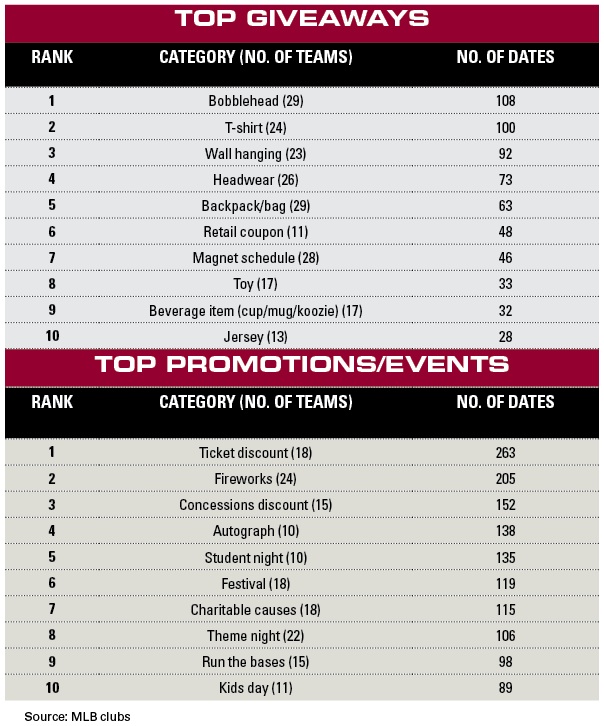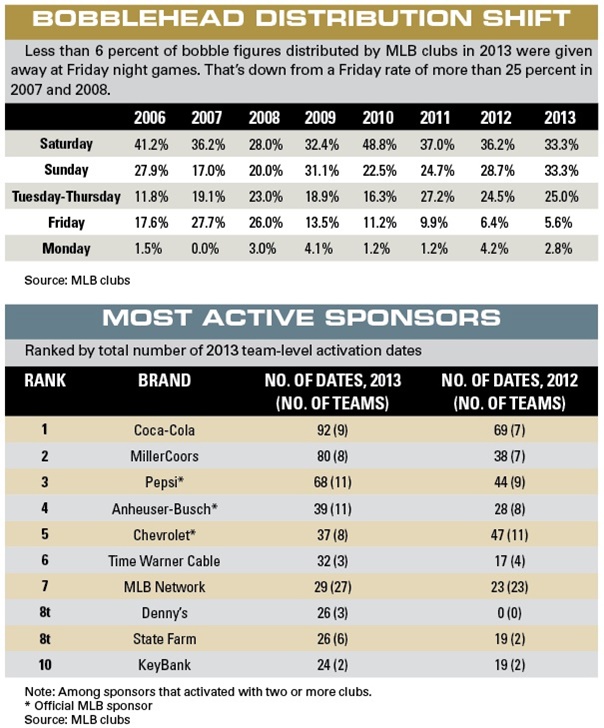MLB clubs differ on the hows and whens, but on the question of what they’re using to entice fans to attend games, their preferred incentive is clear: bobbleheads.
For the second straight year, MLB teams in 2013 were more likely to use a bobblehead to lure fans to the stadium than any other promotional giveaway, according to SportsBusiness Journal’s eighth annual review of team promotional calendars. Twenty-nine clubs distributed a total of 2.59 million bobbleheads across 108 general-admission giveaway dates in 2013. That’s the most such dates since at least 2005 and a 46 percent increase compared with the number of bobbles distributed in 2009.
Boston was the only club without at least one bobblehead giveaway for the year.
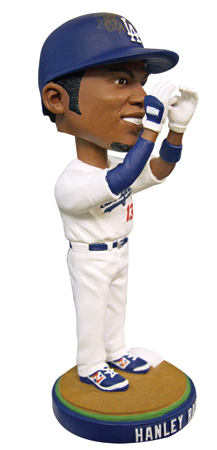 |
|
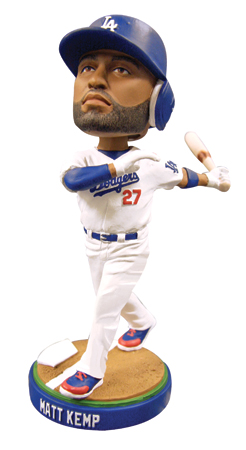 |
|
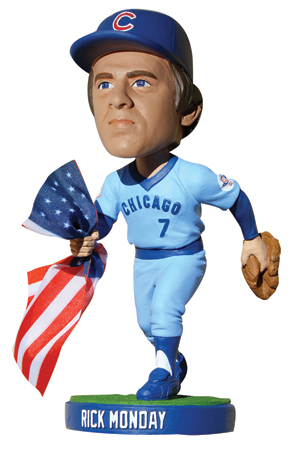 |
The Dodgers’ three Tuesday night giveaways, featuring Hanley Ramirez, Matt Kemp and former player Rick Monday, provided an attendance boost.
|
Overall on the season, MLB clubs hosted 886 giveaway dates (featuring bobbles, T-shirts, backpacks and beyond), a 15 percent increase from 2012 to the highest level ever in our study. All five of the most popular categories saw an increase in the number of distribution dates compared with 2012, as clubs continued their shift away from the distribution of goodies with lower perceived value (think foam fingers) to more premium items.
Bobble items are the most visible example of this growth. Bobbles ranked No. 2 in 2010 (behind headwear) and No. 3 in 2011 (behind No. 1 T-shirts and No. 2 headwear) before returning to No. 1 on the list last year.
The Los Angeles Dodgers led the bobblehead surge, giving away approximately 560,000 bobbles over 11 dates this year. Both marks were tops leaguewide for the second year in a row. Nine of those giveaways occurred on a weeknight. Attendance for the club’s three Tuesday night bobblehead giveaway games specifically (one each featuring current players Hanley Ramirez and Matt Kemp, and one for former player Rick Monday) averaged 50,552 fans, an 18 percent lift over the team’s 10 Tuesday night games that did not include a bobble.
Los Angeles is one of several clubs over the past few seasons that has diverted many of its premium giveaways from Friday nights to different nights of the week, focusing instead on the social potential of Fridays.
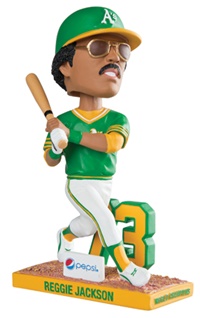 |
Pepsi ranked third among giveaway sponsors.
|
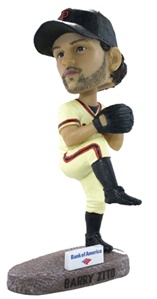 |
The Giants found sponsor preference for weekend giveaways, like the Barry Zito bobble.
|
“Fridays, especially in the summer months, are traditionally very popular for ticket sales, so teams are relying less on promotions to get fans to the ballpark,” said Jay Deutsch, CEO of BDA Inc., MLB’s preferred premium merchandise provider. “This particular day of the week has become a more viable non-item, event-only day, which encourages fans to come earlier and stay later at the ballpark, with the weekend the next day.”
Leaguewide, the number of concerts, fireworks shows and festival-type events held on Friday nights — designed to get fans to spend extra time at the ballpark — was up 6 percent compared with 2012 and up 10 percent from 2011.
Julian Green, vice president of communications and community affairs for the Chicago Cubs, who had 48 giveaways dates in 2013 and historically are one of the more active clubs when it comes to handouts, agreed that teams’ promotional calendars still largely depend on the desires of the clubs’ respective corporate partners. In 2013, for example, Cubs partner Budweiser sponsored three Friday giveaways for fans who were at least 21 years old, but the team held no kid-specific Friday promotions. On the other hand, every Sunday during the team’s 2013 season included a kids giveaway and an opportunity to run the bases after the game.
Grab Bag
■ Teams that had the most giveaway dates: Minnesota Twins (69); Chicago Cubs and Milwaukee Brewers (48).
■ Fewest giveaway dates: Boston Red Sox (5).
■ The Los Angeles Angels and New York Mets had at least one giveaway or promotion for every home game.
■ The “wall hangings” category, which include posters, photos, Fatheads and other similar wall-clings, saw a 15 percent jump in number of dates, while the cup/mug/koozie niche has increased fourfold since 2008.
■ During the season-opening homestand, the St. Louis Cardinals handed out a “Stan Musial Harmonica” in a wooden display box. The team’s legend died in January. After retiring in 1963, Musial often played “Take Me Out to the Ball Game” on his harmonica over the PA system during the seventh-inning stretch.
■ As in past years, the Cubs did not host any fireworks shows, one of only six clubs to go without. (The others: Tampa, Milwaukee, Toronto, Boston and the Yankees.)
The Cubs’ South Side neighbor, meanwhile, held 14 fireworks dates, 13 of which were sponsored. The White Sox were the first team ever to launch such pyrotechnics when then-team owner Bill Veeck installed the world’s first exploding scoreboard in 1960.
Unlike the Cubs, who have seen five straight seasons of
attendance declines, the San Francisco Giants ended the 2013 season with 246 consecutive sellouts, dating to 2010. However, Valerie McGuire, director of special events, realizes that filling every seat every night is improbable, particularly after the club lost 86 games this season. To keep the fans flowing through the turnstiles, the Giants hosted 30 giveaways in 2013, up from 26 in 2012.
“We tend to put the bobbleheads and giveaways on weekends because ticket demand is higher on weekends, more kids attend on weekends and many times the sponsor preference is an item on the weekends,” she said. “We do approximately 32 ‘special ticket’ events each year, which oftentimes includes a promotional item in addition to a gate discount, and those are mainly on weeknights, which helps drive tickets sales up anywhere from 1,000 to 5,000 tickets.”
Leaguewide, 80 percent of all the giveaways in 2013 had at least one sponsor, up from 78 percent in 2012 and up 5 percentage points from 2008. Deutsch said 2013 was BDA’s busiest year ever when it comes to MLB league- and team-level sponsors activating with branded merchandise. The company has had a relationship with MLB since 2007.
Denny’s, a family diner chain with 1,700 locations, was a newcomer to the game-day promotion scene. The Spartanburg, S.C.-based company sought to increase its exposure in Los Angeles, where it has approximately 30 restaurants, by sponsoring the Angels’ weekly Family Sunday program and the weekly postgame fireworks show at Dodger Stadium. The company also sponsored the Minnesota Twins’ six Military Mondays, where active duty military members and veterans received half-price tickets in certain seating sections.
AT&T offered branded promotions with Baltimore, San Francisco, St. Louis, Texas and the New York Yankees for the second straight season, attaching its logo to approximately 230,000 items, half of those being bobbleheads. The company has been a longtime Yankees’ sponsor, and partnering with the club this season on a series of logoed bobbleheads was a way to get both brands’ names extended beyond the ballpark experience.
“The Yankees wanted to commemorate key players past and present and invited us to work with them on the effort,” said Olga Serna, associate director of corporate sponsorship at AT&T.
The motivation for teams using any such incentive is clear. As a league, the percentage of available seats filled over the 2013 season was 70.6 percent, down from 71.3 percent last year and 73.6 percent in 2007. That translates to about 30 million seats that went unfilled this season, and any open seats represent a lost revenue opportunity.
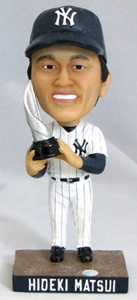 |
|
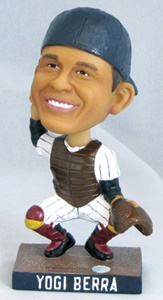 |
AT&T partnered with the Yankees on bobbles honoring star players past and present.
|
Wayne DeSarbo has tracked variables that affect
attendance at MLB games since launching the Center for Sports Business and Research at Penn State University in 2008. He said his research has shown that the act of deciding what promotions to host and how and when to activate them is a constant juggling act for team executives, their sponsors and vendors.
“Our research has shown that game-day promotions are one of the most effective tools that MLB management can utilize to impact game attendance, and that there is much to gain for MLB to optimize its promotional efforts,” said DeSarbo, executive director of the center.
Not all promotions involved a souvenir. The number of dates that included an admission discount available to the general public — offers not tied to a larger package deal or promotion — soared by 60 percent this year over 2012. Fireworks were the second-most-common non-giveaway promotion. After holding the top spot among such promotions every year since at least 2005, a record 24 clubs hosted a record 205 fireworks dates in 2013.
In all, there were 1,791 non-giveaway promotions, such as fireworks, college nights, festivals and theme nights, up 19 percent from 2012.
For this annual research effort, SportsBusiness Journal downloads each team’s promotional schedule once spring training begins and updates each squad’s list monthly. In the case of games that are postponed, teams are consulted for the status of the promotions, and counts are updated accordingly. At the end of the season, each club’s final list was published on its website, and that document was used to reconcile any discrepancies. Data presented is for giveaways that were available to a significant number of attendees. Many games had more than one incentive listed, and each one of those advertised promotions is counted as a unique data point.









